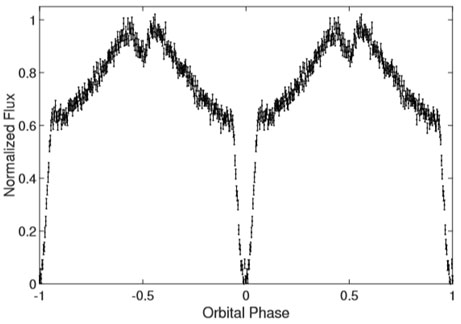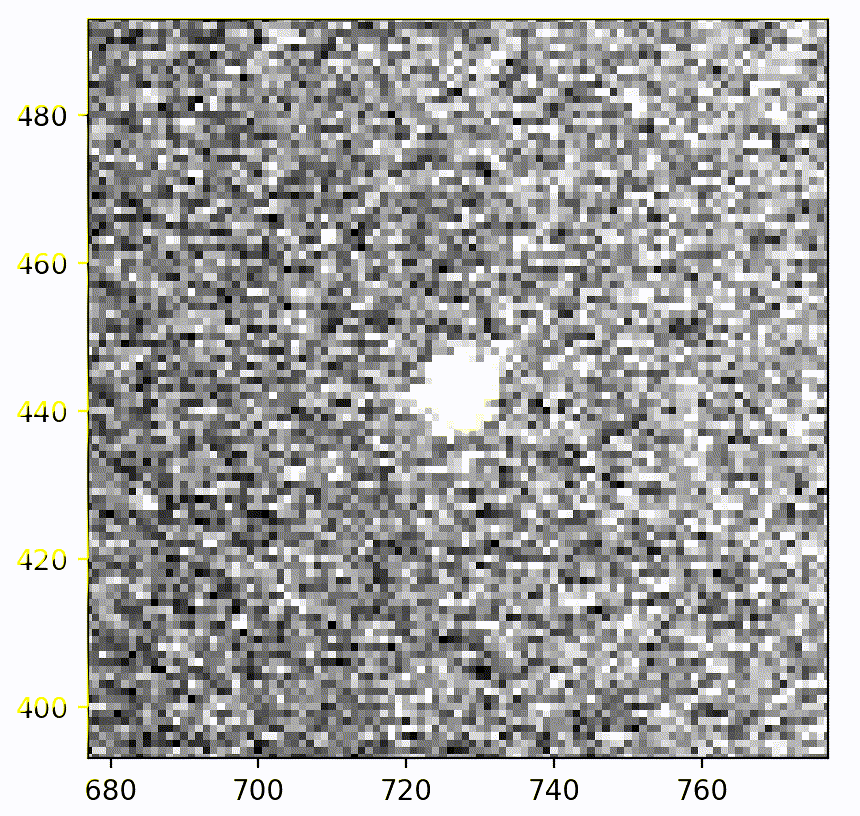9 Mar
Andor iXon EMCCDs Support Discovery of Eclipsing White Dwarf Binary System
In a recent article published in Nature1, Kevin Burdge (Graduate student at Caltech, Pasadena) and collaborators discuss the discovery of an eclipsing binary2 system, called ZTF J153932.16+502738.8 (hereafter referred to as ZTF J1539+5027). The system consists of a pair of compact white dwarfs3, which are remnants of burned-out stars and are thus objects with very high densities. As the hot primary object produces most of the observed light, the system’s light curve shows a deep primary eclipse, which occurs every time the secondary (cooler) companion occults the hotter primary (see Figure 1). From this, the researchers could derive an orbital period of 6.91 minutes. A deep primary eclipse also means that the hot primary seems to “blink” at every occultation, as seen from Earth (see Figure 2). Due to the short orbital period, this system is so compact that both white dwarfs could fit within the dimensions of the solar system planet Saturn.

Figure 1 – This plot shows the phase-folded (on the 6.91 minute orbital period) and binned light curve of the binary system ZTF J1539+5027, measured with the Caltech High-speed Multi-color camERA (CHIMERA) using an Andor iXon Ultra 888 EMCCD.
The researchers took first notice of this unusual system and its periodic brightness variations in June 2018 during an analysis of light curve data measured by the Zwicky Transient Facility4 (ZTF). The ZTF is located at the Palomar Observatory5 and is surveying the northern sky utilizing a 48 inch telescope. Follow-up observations to confirm the periodic source ZTF J1539+5027 were conducted shortly after with the Kitt Peak EMCCD Demonstrator6 (KPED), an instrument on the 2.1m Kitt Peak telescope, and the Caltech High-speed Multi-color camERA7 (CHIMERA), which is a high-speed and wide-field photometer at the Palomar 200-inch telescope. Both follow-up instruments are equipped with Andor iXon Ultra 888 EMCDDs8.

Figure 2 – Movie showing the (sped up) periodic occultation of the primary object every 6.91 minutes, observed with the Kitt Peak EMCCD Demonstrator (KPED) using Andor iXon Ultra 888 EMCCDs. This movie was taken from the KPED website.
“The Andor iXon Ultra camera series is in high demand for a variety of astronomical research applications, such as Adaptive Optics, Speckle and Lucky Imaging and photometric variability studies. This is due to the camera’s characteristics, which combine high sensitivity with low noise and fast readout speeds. We are very proud that the capabilities of Andor iXon Ultra cameras can support researchers in making outstanding scientific discoveries, such as the detection of the double white dwarf binary system ZTF J1539+5027.”, says Dr Ines Juvan-Beaulieu, Astronomy Specialist for Andor.
This discovery also has a great significance for future gravitational wave studies and missions, such as the European Laser Interferometer Space Antenna9 (LISA). “By looking at sources like ZTF J1539+5027 with high speed photometers, we can precisely characterize them by measuring the duration and depth of their eclipses, and precisely time them to observe orbital decay. This allows us to place powerful constraints on the systems, that can be combined with the gravitational wave data LISA will obtain to fully constrain the physics of these systems, and also serve as tests of general relativity.”, says Kevin Burdge, graduate student at Caltech, Pasadena and first-author of the published Nature article1.
Further information and reading:
- Nature article: https://arxiv.org/pdf/1907.11291.pdf
- Binary Star System or Eclipsing Binaries: Two stars that orbit around a common center of mass.
- White Dwarfs: https://imagine.gsfc.nasa.gov/science/objects/dwarfs2.html
- https://imagine.gsfc.nasa.gov/science/objects/dwarfs1.html
- ZTF: https://www.ztf.caltech.edu/
- Palomar Observatory: http://www.astro.caltech.edu/palomar/homepage.html
- KPED: https://kped.org/
- CHIMERA: http://www.tauceti.caltech.edu/chimera/
- Andor iXon: https://www.andor.com/pdfs/specifications/Andor_iXon_ULTRA_EMCCD_Specifications.pdf
- LISA: https://lisa.nasa.gov/
Additional material provided by Kevin Burdge, Caltech:

This movie is constructed directly from co-adding the images taken with an Andor iXon Ultra 888 EMCCD on the Kitt Peak 2.1 meter telescope. The instrument, the Kitt Peak Electron Multiplying Demonstrator (KPED), was used to rapidly image this binary system, and precisely time when the eclipse occurs. One can clearly see the eclipse in this movie, when the second object vanishes. In real-time, this occurs every 6.91 minutes.

